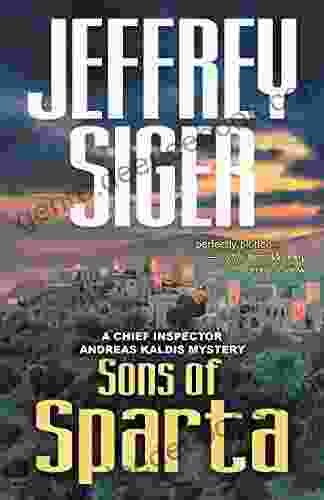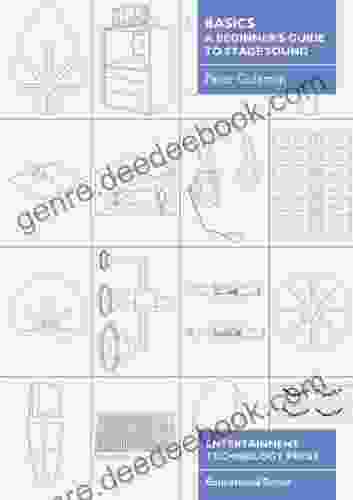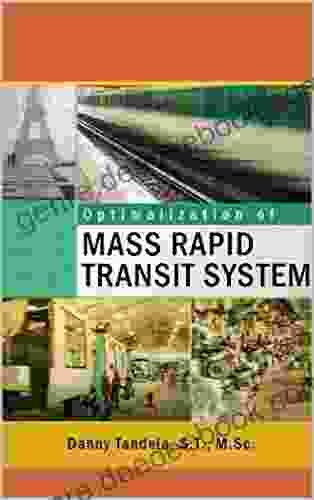Optimizing Mass Rapid Transit Systems for Efficiency and Accessibility

Mass rapid transit (MRT) systems have become the backbone of urban transportation in many cities worldwide. They provide efficient, high-capacity, and environmentally friendly mobility for millions of commuters, reducing traffic congestion, improving air quality, and enhancing economic development. Optimizing MRT systems to maximize their efficiency and accessibility is crucial for sustainable urban growth and livability.
Key Strategies for Optimizing MRT Systems
There are several key strategies that cities can employ to optimize their MRT systems:
4.3 out of 5
| Language | : | English |
| File size | : | 3372 KB |
| Text-to-Speech | : | Enabled |
| Screen Reader | : | Supported |
| Enhanced typesetting | : | Enabled |
| Print length | : | 229 pages |
| Lending | : | Enabled |
| Paperback | : | 96 pages |
| Item Weight | : | 1 pounds |
| Dimensions | : | 7.44 x 9.69 inches |
| Hardcover | : | 268 pages |
1. Network Design
The design of an MRT network has a significant impact on its efficiency and accessibility. Factors to consider include:
- Station spacing: Optimal station spacing balances accessibility and travel time. Closely spaced stations increase accessibility but can slow down overall journey times. - Line configuration: Ring lines and cross-town lines provide greater connectivity and flexibility, but can be more complex to operate. - Intermodal connections: Integration with other transportation modes, such as buses, trains, and cycling facilities, enhances accessibility and convenience for commuters.
2. Capacity Enhancement
Increasing the capacity of MRT systems is essential to meet growing demand. Strategies include:
- Increasing train frequency: Running more trains during peak hours reduces passenger waiting times and overcrowding. - Lengthening trains: Adding more carriages to trains increases capacity without requiring additional track infrastructure. - Signal optimization: Advanced signaling systems can improve train throughput by reducing headways and optimizing traffic flow.
3. Operational Efficiency
Optimizing operational efficiency improves service reliability and reduces costs. Key measures include:
- Automated train operation (ATO): ATO systems remove human error from train operations, enhancing safety and precision. - Preventative maintenance: Regular maintenance and inspections prevent equipment failures and minimize service disruptions. - Real-time passenger information: Providing real-time information on train schedules and delays improves passenger satisfaction and reduces stress.
4. Fare Integration
Integrated fare systems make public transportation more accessible and affordable for commuters. Key elements include:
- Common payment methods: Using a single payment card or system for all modes of transportation simplifies fare collection and reduces barriers to intermodal travel. - Smart ticketing: Smart ticketing systems can automate fare calculations, reduce fraud, and provide personalized travel options. - Fare capping: Fare capping mechanisms limit the total amount spent on public transportation within a given period, making it more affordable for frequent users.
Benefits of Optimizing MRT Systems
Optimizing MRT systems offers numerous benefits for cities and their residents:
- Improved mobility: Efficient and accessible MRT systems provide convenient and reliable mobility for commuters, reducing traffic congestion and improving overall travel times. - Environmental sustainability: MRT systems reduce vehicle emissions and promote sustainable transportation modes, contributing to improved air quality and a healthier environment. - Economic development: MRT systems stimulate economic development by connecting people to jobs, businesses, and amenities, enhancing accessibility and investment opportunities. - Social equity: Accessible MRT systems provide transportation options for all members of society, improving social equity and opportunities.
Optimizing mass rapid transit systems is essential for sustainable urban development. By adopting a comprehensive approach that encompasses network design, capacity enhancement, operational efficiency, and fare integration, cities can create robust and reliable MRT systems that meet the growing transportation needs of their populations. These optimizations improve mobility, enhance accessibility, reduce environmental impact, and promote economic prosperity, making MRT systems a cornerstone of vibrant and livable cities.
4.3 out of 5
| Language | : | English |
| File size | : | 3372 KB |
| Text-to-Speech | : | Enabled |
| Screen Reader | : | Supported |
| Enhanced typesetting | : | Enabled |
| Print length | : | 229 pages |
| Lending | : | Enabled |
| Paperback | : | 96 pages |
| Item Weight | : | 1 pounds |
| Dimensions | : | 7.44 x 9.69 inches |
| Hardcover | : | 268 pages |
Do you want to contribute by writing guest posts on this blog?
Please contact us and send us a resume of previous articles that you have written.
 Book
Book Page
Page Chapter
Chapter Story
Story Genre
Genre Library
Library Paperback
Paperback Magazine
Magazine Newspaper
Newspaper Sentence
Sentence Shelf
Shelf Glossary
Glossary Foreword
Foreword Preface
Preface Synopsis
Synopsis Annotation
Annotation Manuscript
Manuscript Codex
Codex Tome
Tome Autobiography
Autobiography Memoir
Memoir Reference
Reference Dictionary
Dictionary Narrator
Narrator Catalog
Catalog Card Catalog
Card Catalog Stacks
Stacks Archives
Archives Research
Research Reserve
Reserve Reading Room
Reading Room Interlibrary
Interlibrary Study Group
Study Group Thesis
Thesis Dissertation
Dissertation Storytelling
Storytelling Reading List
Reading List Book Club
Book Club Theory
Theory Textbooks
Textbooks Dianne White
Dianne White Bette Blaydes Pegas
Bette Blaydes Pegas Mia Black
Mia Black Wendell Berry
Wendell Berry Dawn Paley
Dawn Paley Helena Garcia
Helena Garcia Noah Smithwick
Noah Smithwick Terrance J Quinn
Terrance J Quinn Nicole Helm
Nicole Helm Howexpert
Howexpert Greg Karraker
Greg Karraker Marcia Coyle
Marcia Coyle Bill Evans
Bill Evans Richard C Bush
Richard C Bush Dan Brodsky Chenfeld
Dan Brodsky Chenfeld R T Acron
R T Acron Leonie Charlton
Leonie Charlton Garland Coulson
Garland Coulson Ivy Junetree
Ivy Junetree Jamie Bartlett
Jamie Bartlett
Light bulbAdvertise smarter! Our strategic ad space ensures maximum exposure. Reserve your spot today!

 William WordsworthExtra Hidden Life Among the Days: A Poetic Exploration of Memory and the...
William WordsworthExtra Hidden Life Among the Days: A Poetic Exploration of Memory and the...
 Harold PowellSons Of Sparta - Chief Inspector Andreas Kaldis: A Profile of Courage and...
Harold PowellSons Of Sparta - Chief Inspector Andreas Kaldis: A Profile of Courage and... David PetersonFollow ·8.3k
David PetersonFollow ·8.3k Jackson BlairFollow ·2.5k
Jackson BlairFollow ·2.5k Eric HayesFollow ·15.4k
Eric HayesFollow ·15.4k Dominic SimmonsFollow ·9.7k
Dominic SimmonsFollow ·9.7k Forrest ReedFollow ·16.3k
Forrest ReedFollow ·16.3k Thomas HardyFollow ·16.4k
Thomas HardyFollow ·16.4k Thomas PynchonFollow ·6.3k
Thomas PynchonFollow ·6.3k Ervin BellFollow ·6.4k
Ervin BellFollow ·6.4k

 Rodney Parker
Rodney ParkerBasics Beginner Guide To Stage Sound
Start with a good source. The...

 Glenn Hayes
Glenn HayesKiwi in the Realm of Ra: Exploring the Mystical Kiwi...
Origins and...

 John Grisham
John GrishamAdvances In Marine Biology Volume 71
Unveiling the Hidden Wonders...

 Edison Mitchell
Edison MitchellGoodbye Brings Hello: Embracing the Transformative Power...
In the tapestry of life, endings...
4.3 out of 5
| Language | : | English |
| File size | : | 3372 KB |
| Text-to-Speech | : | Enabled |
| Screen Reader | : | Supported |
| Enhanced typesetting | : | Enabled |
| Print length | : | 229 pages |
| Lending | : | Enabled |
| Paperback | : | 96 pages |
| Item Weight | : | 1 pounds |
| Dimensions | : | 7.44 x 9.69 inches |
| Hardcover | : | 268 pages |











